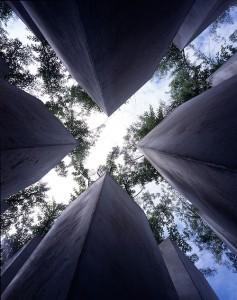It’s not only Jewish history in Germany that continually surprises us with its complexity: the visitors to the Jewish Museum can also be as unexpected as they are diverse. During my tours through the permanent and temporary exhibitions, I have had remarkable encounters. This year among the most unusual was with a group of theologians from the city of Qom, who came to experience the museum at the beginning of October. Most Iranian preachers and imams graduate from the theological seminary at Qom, not far from the capital Tehran and considered, in contrast to the liberal Najaf for instance, a bastion of conservative learning.
Like many other visitors, the Iranian theologians came to the Jewish Museum as part of a larger tour group. The Center for Comparative Theology and Cultural Studies at the University of Paderborn had made a trip to Iran with its students in the winter and subsequently organized this visit in return. The Iranian Shiite theologians were accompanied therefore by Christian as well as Muslim theology students from Paderborn, with whom they had – so it appeared – little in common.
Some of them were draped in long robes and wore turbans, and were thus easily recognizable as traditional scholars from the old world.
The visitors arrived unannounced and, for me, as quite a surprise: the University of Paderborn had booked the tour without pointing out the group’s unusual composition. I had heard from a former colleague about the inter-religious program of studies there and about the trip the German students took to Iran. That the visit paid in return would include Berlin and a stop at the Jewish Museum surprised the guests from Iran as much as it surprised me. Though I have been a guide for many years, this tour was an emotional challenge. For a short time, the abyss would be bridged – in person, not just in theory. Yet it is not easy to talk to people whose political-religious representative denies the Holocaust and agitates against Israel. On the other hand, they were here. It wasn’t I who sought them out: they were guests. I decided to begin by leading them outside into the garden, to introduce the group to Libeskind’s impressive architecture – and to excuse myself for my unprepared English. They reacted to the latter with a compliment: my English was better than theirs, they said, and thus the ice seemed to be broken.
From the start, the guests followed my explanations of the building and exhibition with interest and increasing attention, posing various questions – including whether Germany also has a museum on Islam.
Accompanied by lively discussion we made our way at a measured pace, and with a certain distinct choreography, through the museum. At the portrayals of exile and persecution as recurring experiences in Jewish history in Germany, in the Axes of Holocaust and Exile, some of the participants retreated visibly, suddenly occupied with their mobile phones. They were clearly less interested in my account of that history – without, however, formulating an explicit dissent. During the tour through the areas of the exhibition on religious tradition, by contrast, the group drew closer together and listened with great concentration. The manner of presenting religious observances, the occasionally playful way of dealing with diversity within the Jewish community, as well as the imaginative multimedia installations – the visitors observed all these attentively and thoughtfully. At the end of the tour, these rare guests bid farewell with handshakes – and, among the many visitors in the year 2012, certainly left their imprint.
A radio program on the Iranian students and their professors’ encounter with the cultural and religious diversity of Germany aired on the Deutschlandfunk station on 16 October 2012.
Marc Wrasse, Guide
